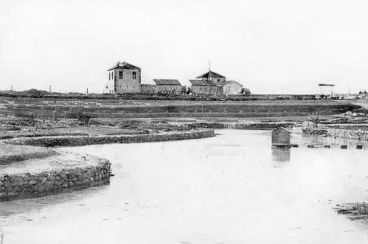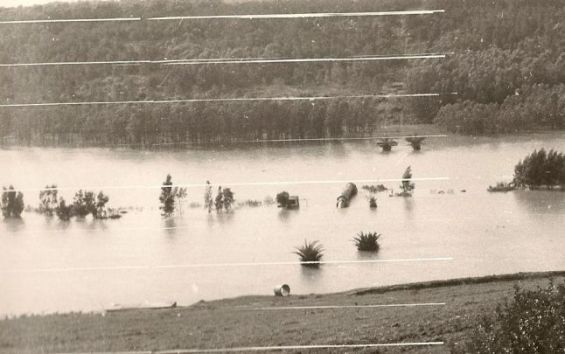1963 was a tough year for the Moroccan people. Two major flooding events devastated the northern part of the country, claiming lives, destroying houses, flooding hundreds of hectares of agricultural land, and even damaging important infrastructure, including the Mohamed V dam, located 35 kilometers south of Zaio on the Moulouya River.
The disastrous events occurred at the start of 1963, with Morocco barely recovering from a previous catastrophe: the 1960 Agadir earthquake. Abundant and torrential rains in early January 1963 struck northwestern Morocco, resulting in heavy floods.
In a January 11, 1963 article, French newspaper Le Monde described the heavy showers in Morocco as having catastrophic proportions, speaking of human casualties, submerged agricultural lands, and significant destruction to roads, bridges, and buildings.

Le Monde, quoting news agencies AFP, AP, and Reuters, reported that the heavy rains led to the overflow of the Sebou Wadi, a river in northern Morocco with its source in the Middle Atlas mountains.
Around fifty thousand affected
The damage caused by the torrential rains, which lasted for two weeks, led to dozens of deaths, the newspaper wrote, causing food and water shortages in the impacted areas. «Despite the efforts of the air force, food supplies are sorely lacking in many places. Drinking water is in short supply, and the risk of epidemics is growing», it reported.
The news reports estimated the number of people impacted by the floods at around fifty thousand, citing the Gharb, a region located between Tangier and Rabat, as the nerve center of the catastrophe.
The plain flooded by the Oued Sebou was covered by more than one meter of water, and most of the region's towns were completely cut off. This included the city of Kenitra, which Le Monde described as «dangerously threatened».
Indeed, many of the city’s districts were evacuated, including its industrial district. The affected zones also included the American base in Sidi Slimane, with that of Kenitra facing the same danger.
In addition to the human losses, the floods killed livestock in the impacted regions and devastated the crops.

In cooperation with the Moroccan authorities, the US Army decided to launch a vast relief operation following the January floods to help isolated farmers. Sixteen tanks of drinking water were parachuted into the disaster area, but half of them missed their target, Le Monde wrote.
At the time, Ahmed Reda Guedira, then Morocco's Minister of the Interior, said he had the situation in Kenitra under control, but that it was critical for some tribes.
The flood events of January 1963 were so intense that they washed away a lot of soil from the mountains and spread it across the plains, explained a report titled «Quelques observations sur les effets des pluies violentes de janvier 1963 dans le Moyen Atlas et le Prérif» by Camille Ek and Léon Mathieu.
Quoting rainfall statistics published by the Service de la Météorologie Nationale and the Service de Physique du Globe et de Météorologie, the report indicated that on January 5, 1963, Le Jebel Oukta in the Rif recorded 134.5 millimeters of rain. The following day, 117.2 mm fell at Ifrane, in the Middle Atlas.
«The overriding characteristic of the regions studied is therefore the concentration of very high levels of precipitation in a very short period. This is what makes these rains so powerful and dangerous», explained the report.
A damaged dam and stamps of mourning
Four months later, similar events took place in Morocco, adding fuel to the fire. In May 1963, the Moulouya Valley flooded, reportedly killing 170 people and damaging land, livestock, and infrastructure.
Reports on the floods in Morocco note that the Moulouya floods damaged the Mohamed V dam, which was later reinforced following the catastrophe. The flood was so violent that it carried away the left bank foundation of the Mohamed V dam, located south of the city of Oujda, wrote The World in Stamps, quoting the Directorate of Surveillance and Risk Prevention.
![]()
Morocco had its own way of remembering the victims of the two flood events. Post office stamps with the word «floods» in Arabic were created to mourn the victims and included a tax to support them. The stamps, which included the effigy of the late King Mohammed V, were issued on January 28, 1963.
Some sources go even further, stating that King Hassan II decided to cancel Eid al-Adha that year to mourn the victims and in view of the damage the floods caused to livestock. Others blame this decision also on the war that Morocco fought against Algeria in 1963.




 chargement...
chargement...











